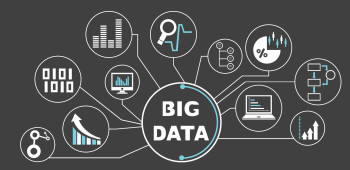
A triad of terms captures the essence of “big data”: volume, velocity and variety. The volume and pace at which data is created can challenge existing computing infrastructure. For example, every flight of a Boeing 777 can generate up to 1 terabyte (~1000 gigabytes) of data. Making sense of this data is imperative for decision making and troubleshooting. The theory of bounded rationality proposed by Nobel Laureate Herbert Simon is evermore significant today with the increased complexity of business problems; the human mind is constrained in its capacity to evaluate alternatives, given limited time to make conclusions.
Organisations large and small are forced to grapple with problems of big data, which challenge the existing tenets of data science and computing technologies. Techniques in predictive analytics rely heavily on the validity of statistical concepts such as independent and identically distributed (IID) random variables and the central limit theorem (CLT). When dealing with big data, the validity of these assumptions becomes questionable. Straightforward tasks such as interpreting descriptive statistics have their share of issues. We begin to question the utility of summary measures and diagrams.
Algorithms that work well on “small” datasets crumble when the size of the data extends into the gigabytes. Time series techniques must be revamped to handle streaming data in continuous time. Social media messages have data formats that are unfit to be represented by traditional databases. While these may appear to be difficult problems, there has been a tremendous progress in big data analytics. For example, columnar databases have significantly boosted query speeds. File systems can seamlessly distribute datasets on multiple hard drives, and facilitate analytics on them in real time. Finally, the free and open source nature of several big data platforms promotes rapid adoption.
This article was originally published on www.iimb.ernet.in and can be viewed in full here
 (0)
(0) (0)
(0)Archive
- April 2024(80)
- March 2024(112)
- February 2024(109)
- January 2024(95)
- December 2023(56)
- November 2023(86)
- October 2023(97)
- September 2023(89)
- August 2023(101)
- July 2023(104)
- June 2023(113)
- May 2023(103)
- April 2023(93)
- March 2023(129)
- February 2023(77)
- January 2023(91)
- December 2022(90)
- November 2022(125)
- October 2022(117)
- September 2022(137)
- August 2022(119)
- July 2022(99)
- June 2022(128)
- May 2022(112)
- April 2022(108)
- March 2022(121)
- February 2022(93)
- January 2022(110)
- December 2021(92)
- November 2021(107)
- October 2021(101)
- September 2021(81)
- August 2021(74)
- July 2021(78)
- June 2021(92)
- May 2021(67)
- April 2021(79)
- March 2021(79)
- February 2021(58)
- January 2021(55)
- December 2020(56)
- November 2020(59)
- October 2020(78)
- September 2020(72)
- August 2020(64)
- July 2020(71)
- June 2020(74)
- May 2020(50)
- April 2020(71)
- March 2020(71)
- February 2020(58)
- January 2020(62)
- December 2019(57)
- November 2019(64)
- October 2019(25)
- September 2019(24)
- August 2019(14)
- July 2019(23)
- June 2019(54)
- May 2019(82)
- April 2019(76)
- March 2019(71)
- February 2019(67)
- January 2019(75)
- December 2018(44)
- November 2018(47)
- October 2018(74)
- September 2018(54)
- August 2018(61)
- July 2018(72)
- June 2018(62)
- May 2018(62)
- April 2018(73)
- March 2018(76)
- February 2018(8)
- January 2018(7)
- December 2017(6)
- November 2017(8)
- October 2017(3)
- September 2017(4)
- August 2017(4)
- July 2017(2)
- June 2017(5)
- May 2017(6)
- April 2017(11)
- March 2017(8)
- February 2017(16)
- January 2017(10)
- December 2016(12)
- November 2016(20)
- October 2016(7)
- September 2016(102)
- August 2016(168)
- July 2016(141)
- June 2016(149)
- May 2016(117)
- April 2016(59)
- March 2016(85)
- February 2016(153)
- December 2015(150)